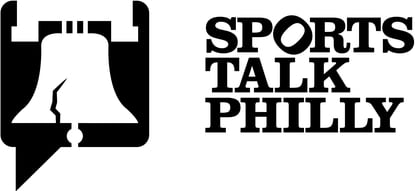By: Matt Alberston, Historical Columnist
Previously in "Greatest Phillies not in the Hall of Fame," we examined Deadball Era star and former Phillies captain Sherry Magee. Today, I'll discuss the case for his teammate Clifford "Gavvy" Cravath and assess his chances at Hall of Fame immortality. Cravath was the premier power hitter of the Deadball era but is given little in regards to Hall of Fame consideration. Today, I'll present the case against Cravath and then explain why the knocks against him shouldn't keep him out of the Hall of Fame discussion.
Gavvy Cravath warms up before a game at Baker Bowl during the 1913 pennant race
Clifford "Cactus Gavvy" Cravath, OF, (1912-1920)
What's Keeping Him Out?
Cravath hit an astonishing 117 of his 119 career home runs between 1912 and 1920. He was the greatest home run hitter of the Deadball Era (1900-1919) where his 118 era home runs outpaced second place slugger Sam Thompson by 22 home runs. What's more astounding is that of Cravath's 119 career home runs, 92 were hit at Philadelphia's Baker Bowl. As mentioned in the case against Sherry Magee, Baker Bowl's right field wall was only 279 feet from home plate. The oft repeated assumption is that Cravath took advantage of Baker Bowl's short right field for cheap home runs. It would make sense, given his 92 home runs hit in Philadelphia.
The dimensions of Baker Bowl are outlined in yellow while those of Citizens Bank Park are in black. (Curotec.com)
The Case:
Cravath only hit 35 of his 92 home runs over the right field wall at Baker Bowl, which accounts for 30% of his total round trippers at home. A lot of pundits state that Cravath took advantage of the short right field for cheap home runs, but as the numbers show, that just is not the case. Why? While the distance to right field was only 279 feet away, Cravath was a right handed hitter, which made it difficult to knock a ball over the right field fence in any era. Plus, don't forget that the right field wall was an enormous 40 feet tall. This means that the 35 balls he did hit over the wall were towering drives which, given their trajectory, could have been home runs at any ball park.
Cravath's home and away splits also prove that Cravath was an excellent hitter wherever he played. Sure, his away numbers are lower, but these statistics don't explain the game scenarios he dealt with during away games. (These are only statistics from 1913-1920. Information is missing for 1908-1912).
What's more, Cravath did all of his hitting in what many would call the "twilight" of his career. He was 32 years old when he debuted for the Phillies in 1912 and played until he was 40 in 1920. Imagine if he began his career in the big leagues like many did in their early 20's.
Lastly, there is precedent for Cravath's enshrinement into the Hall of Fame. Mel Ott, the New York Giants superstar who played from 1926 until 1947 (yes, during the live ball era), had a distinct home field advantage. Ott hit 323 of his 511 home runs at the oddly shaped Polo Grounds, where the 12 foot high right field wall was 257 feet from home and the left field wall was 279 feet from home.
I rest my case.
Chances of Induction: 2/10
I give Cravath the same chances at a Hall of Fame induction as Sherry Magee. The reasons are largely the same. While Cravath's numbers are better than Magee's, the excuse for benching his Hall of Fame chances are more magnified because Cravath was a major power hitter. In 1915, Cravath's 24 home runs were only bested by three teams – yes, teams. He is the outlier of the Deadball Era. It was hard to hit home runs in that era. Although he only hit 35 opposite field home runs over Baker Bowl's gargantuan right field wall, I have no doubt that the Historical Overview Committee sees his home run total at home and completely dismisses him because Baker Bowl's dimensions were so odd.
Another issue is the length of his career. While Mel Ott benefited from BOTH short fields at the Polo Grounds, he played for 22 years while Cravath only played for 11 years. Career length most certainly played into the discussion about Chuck Klein (who also spent 15 of his 17 years playing home games at Baker Bowl), enough to the point that Klein earned induction into the Hall of Fame.

